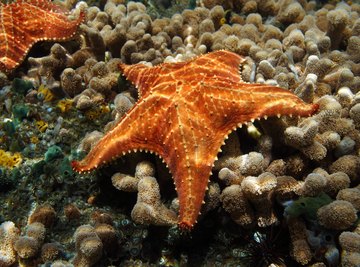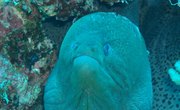
The deep sea has many secrets. It is the largest basically unexplored ecosystem on earth. The deepest zone of the sea is referred to as “The Trenches” or Hadalpelagic Zone. This zone is defined as beginning at approximately 19,000 feet and extending to the ocean floor. At this depth there is no perceivable light so there are no plants, resulting in very little food being available to sustain animal life. Nonetheless, life does exist in the deepest level of the ocean.
Giant Tubeworms
The scientific name for the giant tube worm is Riftia pachyptila. Tube worms were discovered living in deep sea waters under what are called hydrothermal vents, also called “black smokers.” These vents are filled with chemicals and minerals and produce what scientists refer to as toxic soup. This soup is deadly to most animals, but whole ecosystems of animals survive close to these black smoker vents. It is in this environment that the giant tube worm exists. Giant tube worms can grow to 8 feet or more and do not have mouths, nor digestive tracts. They survive on the symbiotic relationship they have with bacteria living inside of them.
Starfish
Although starfish are commonly seen on beaches and in shallow ocean water, as a species they are quite adaptable and are also found in the deep waters of the Trenches” or the Hadalpelagic Zone. The name fish is a misnomer. A starfish is not a fish but rather an echinoderm. The echinoderm is in the same family as sea urchins and sand dollars, which use sea water to pump food through their bodies. Some scientists have begun to call starfish "sea stars" as a way to distinguish them from fish.
Foraminifera (Forams)
Forams are protists that are free-living single cell organisms. Given that forams live in the deepest waters of the sea, they have very unusual processes for acquiring nutrition and reproducing. Formas have shells covering their bodies. These shells are generally separated into chambers. The shells are made of either organic mixtures, grains of sand combined with other particles or crystalline calcite. The exact composition of the shells is related to the specific species. These organisms are so small they cannot be seen with the naked eye.
Cusk-eels
The cusk-eel lives in the deepest water on the planet and is a species of fish. These fish have been seen all over the world, but often in subtropical and tropical areas. Most commonly, these fish are elongated and look very similar to eels. They lay eggs rather than having live births.
References
Resources
About the Author
Mary Johnson-Gerard began writing professionally in 1975 and expanded to writing online in 2003. She has been published on the Frenzyness Divorce Blog and on Neumind International Pte Ltd. Her book "When Divorce Hurts Too Long—Ouch" was published in 2009. Johnson-Gerard holds a doctorate in educational psychology from the University of Missouri.
